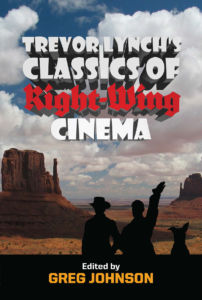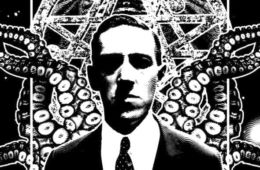Dune: Part Two
Frank Herbert’s original novel Dune (1965) is a brilliant synthesis of the futurism of science fiction and the archaism of fantasy literature. Denis Villeneuve’s Dune: Part Two is now in theaters. It is a bit better than the first part, but has all the same problems, and a few new ones, so I can’t recommend it. Like the first part, it is not terrible, just mediocre: dull to my eyes, grating to my ears, trying to my patience, an insult to my intelligence, and worst of all: just another Hollywood attack on white people.
Dune: Part Two is 168 minutes long. The first part was 156 minutes. That’s 324 minutes to tell a story that David Lynch told — and usually told better — in 137 minutes. With all that screen time to work with, Villeneuve could have put much more of the book on screen than Dune, and he does so to some extent: In the first part, we see Paul Atreides’ duel with Jamis. In the second part, we are treated to his funeral. We also see more events on Giedi Prime and the extraction of the water of life from a baby sandworm.
But Villeneuve also pads the running time with things that are not in the book. These inventions are in service of two agendas: political correctness (feminism and anti-whiteness) and creating a spectacle for drooling dullards.
Villeneuve has a difficult job making Herbert’s vision of the future politically correct, because Herbert was deeply reactionary. Dune depicts a world where liberal democracy failed, and the galaxy is ruled by a feudal Imperium. Space travel and colonization require vast time-horizons to travel, settle, and govern across great distances. Such planning is not characteristic of liberal democracy. But medieval social forms such as hereditary monarchy, feudalism, and initiatic spiritual orders can plan and act over centuries. Thus Herbert thought they would take us to the stars.
Artificial intelligence has been destroyed as oppressive. Without computers, humanity must fall back on natural gifts, which are rare and unevenly distributed. To reproduce and refine these gifts, eugenics is practiced. Biological sex differences are also recognized as important and real.
Herbert’s vision of the future is unapologetically Eurocentric. His Imperium is based on medieval Europe, while his vision of Arrakis and its native people, the Fremen, is based on Arabia — i.e., the Near East. Herbert envisioned his characters as, if not European, at least as Caucasoid. The Imperium is European. The Fremen people of Arrakis believed themselves descended from Egyptians.
Thus from a Right-wing, European identitarian viewpoint, a really good movie selling Herbert’s vision to a whole new generation would have been a wonderful thing.
Three aspects of Dune lend themselves to a Leftist adaptation: the novel’s emphasis on ecology, the story’s anti-colonialist aspect, and the central role of a rare commodity (the spice). But, of course, the true Right is ecological and anti-imperialist, and the importance of the spice does not support a vulgar materialism, given that the galaxy is ruled by warriors and mystics, not merchants.
Villeneuve primarily subverts Dune by stuffing the cast with non-whites and strong women. There are no Negroes in Herbert’s Dune, but Villeneuve’s Dune swarms with them. In the first part, the Imperial Planetologist, Dr. Liet Kynes, was race- and sex-swapped by a black woman (Sharon Duncan-Brewster). Liet’s daughter Chani is played by an unattractive and uninteresting mulatto actress, Zendaya. When Paul Atreides and his mother Jessica arrive in a Fremen community, they are surrounded by African and Middle Eastern types in dirty rags jabbering unintelligibly. The effect is genuinely terrifying. Of course, now that the Fremen have been blacked up, Villeneuve’s Dune is being denounced as a “white savior” movie, which couldn’t be said of earlier adaptations.

You can buy Trevor Lynch’s Classics of Right-Wing Cinema here.
The villains, however, are largely white. Indeed, the Harkonnens are depicted as bald-headed and pasty white. Skinheads, in short. I feared the first installment of Villeneuve’s Dune would be a race war between “racist” whites and an antifa-like coalition of non-whites and white race-mixers. But there are a couple of non-white villains in the first part. In Part Two, however, the non-white villains are gone, and the race-war dynamic is shockingly clear. The Harkonnens even go in for Nuremberg rallies and gladiatorial matches.
Zendaya’s Chani has a bigger role in this part. Here Villeneuve takes great liberties with the book. Chani is a strong, independent desert woman. She’s a warrior. She explains that the Fremen are all equal, men and women, and all work for the common good, unlike the Imperium, which is all about inequality. This is an absurd lie. The Fremen are rigidly hierarchical and “sexist” in the novel. Chani and another strong, independent desert woman invented for the film also scoff at the Fremen’s religion, which again departs from the book. We are told that in the “South” of Arrakis, people speak with a different accent and the whole area is swarming with superstitious religious “fundamentalists” ripe for enslavement by a strong man cloaked as a messiah.
You may think you hate Hollywood enough, white man, but you will never hate them as much as they hate you.
How do the actors in this Dune compare to earlier versions?
Timothée Chalamet remains good as Paul Atreides. But he is no better in the role than Lynch’s Kyle MacLachlan or the Sci-Fi Channel’s Alec Newman.
Rebecca Ferguson remains good as Paul’s mother Jessica, but again, she is not better than Francesca Annis in Lynch’s film. (The best Jessica of all is Alice Krige in the Sci-Fi Channel’s miniseries Children of Dune.)
Charlotte Rampling remains adequate as Bene Gesserit Reverend Mother Mohiam, but she is not better than Siân Phillips in Lynch’s film.
Javier Bardem’s Stilgar is okay, but he is not better than Steven Berkoff in Children of Dune.
Zendaya is a dreadful Chani.
Stellan Skarsgård remains disappointing as Baron Vladimir Harkonnen, inferior to both Kenneth MacMillan in Lynch’s version and Ian McNeice in the two Sci-Fi adaptations. Interestingly, Villeneuve’s Baron is not depicted as a homosexual pedophile, as he is in the book. Hollywood is very protective of pedophiles these days.
Josh Brolin’s Gurney Halleck is very well-realized. I actually like him better than Patrick Stewart in Lynch’s film.
Three of the novel’s most fascinating characters — the Emperor, Feyd Rautha Harkonnen, and Paul’s sister Alia — first appear in Part Two. Princess Irulan also makes her first appearance in it. They are all pretty much duds.
Christopher Walken is terrible as the Emperor. He’s old, feeble, expressionless, and has very few interesting lines. By far the best Emperor is José Ferrer in Lynch’s film.
Austin Butler is good as Feyd Rautha Harkonnen, but the characterization is over the top. All the Harkonnens go around cackling and killing their henchmen for fun. You can’t actually run a society that way. It actually makes Lynch’s portrayal of the Baron more credible. Butler is excellent in the fight scenes. Sting’s Feyd is still the most memorable, and I also liked Matt Keeslar in the Sci-Fi miniseries.
In the novel, Paul’s sister Alia is born among the Fremen and is about three years old when she plays a role in Paul’s final showdown with the Emperor. In Villeneuve’s film, she isn’t even born, meaning that the whole storyline is scrunched into less than nine months. Paul does have a vision of Alia, however, and she is played by Anya Taylor-Joy. The best Alia is Daniela Amavia in the Children of Dune series.
Princess Irulan plays an important role in Dune Messiah and Children of Dune, but in Dune itself she is merely the narrator. As in the Sci-Fi miniseries of Dune, Villeneuve gives her a role. She is played by Florence Pugh, but I was not impressed. Julie Cox was excellent as Irulan in the two Sci-Fi adaptations, especially Children of Dune.
As for Villeneuve’s direction: All my complaints about the first movie stand. The special effects are better than any other adaptation, but the ships, cityscapes, and interiors are uninteresting and unimaginative. I find it hard to believe that people who rule over entire planets and galaxies would live in such hideous and squalid quarters. There is also no grand landscape photography. This movie is just brown and ugly. The score is more tuneless electronic droning and annoying female ululations, squirted out of a hose at the Hans Zimmer workshop and mixed at ear-splitting volume.
No review will deter Herbert fans from seeing this film, although they will feel betrayed and probably a bit bored as well. Herbert deserves better, and so do you. So if you are simply a fan of science fiction and fantasy, David Lynch’s Dune remains the best version on film. But nothing beats the original novel.




